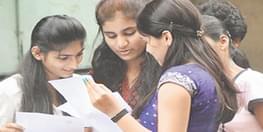Born to modest middle-class parents and brought up in Kolkata, Sreemanta completed his formal education at the University of Calcutta. He earned his PhD in Physics from the Indian Association for the Cultivation of Science (with the degree conferred by the University of Calcutta) in 2013. Subsequently, he moved to the Weizmann Institute of Science, Israel’s condensed matter physics department, supported by international funding from the Ministry of Education, State of Israel, for his first postdoctoral research. Later, in 2015, he joined the Nanyang Technological University, Singapore, for his second post-doc. In 2018, Dr. Mitra returned to India and joined the physics department of the Indian Institute of Science, Bangalore, for his third post-doc, after a brief stint as a visiting scientist at the Bose Institute Kolkata. He continued his association there until 2022, when he joined the physics department of GITAM University’s Bangalore campus as a faculty member. Currently, Dr. Mitra serves as an assistant professor, leading the Physics of Electronic Quantum Matter Lab at the host department, while also serving as the MURTI Faculty Fellow of GITAM University.

Could you please brief your experience so far being associated with GITAM University and being a part of the academic community here?
Under the esteemed leadership of Hon’ble President M. Sribharat, and other academic leaders, GITAM University is undergoing a significant transformation from primarily being a teaching institution to becoming a research-focused university. It is proactively taking all the necessary measures to elevate its standards in various facets of quality university education. As someone with a research background, I find these initiatives promising and am eager to grow individually while contributing to the university’s growth. The university officials and support staff, particularly from the Research Directorate and other academic and administrative offices, have been incredibly supportive and helpful.
What distinguishes GITAM University's Ph.D. program from others?
In my view, GITAM’s strength lies in its high-caliber faculty, exceptional research infrastructure, and forward-thinking vision. The faculty at GITAM is deeply dedicated to conducting top-tier research and holds the belief that PhD graduate students are the primary contributors to this aspiration. We strive to equip our PhD students with the best of our abilities and resources, enabling them to compete intellectually in their future academic pursuits. The PhD students who join GITAM will not be working under us, but rather alongside us, sharing in the dream we hold. This collaborative approach sets us apart.
Could you provide more details about the MURTI Excellence Fellowship, including the criteria for eligibility and the application process?
MURTI is a standout initiative at GITAM, embodying true multidisciplinarity. The MURTI Excellence Fellowship is offered to PhD graduate students based solely on their merit, without any discrimination based on caste, religion, or gender. Candidates are required to pass GITAM’s graduate admission test, followed by a comprehensive interview. The decision to award a candidate the MURTI Excellence Fellowship is made by the committee, based on the candidate’s performance in the examination and interview. Currently, the university leadership has decided to grant the MURTI fellowship to a maximum of 25% of the successful candidates.
Check GITAM University Bangalore Coursse & Fees
How does GITAM University facilitate collaboration with distinguished scientists and industry experts, both nationally and internationally?
GITAM fosters a collaborative approach to address important research questions proposed by its faculty members. Currently, specific areas of expertise are being identified, and the faculty engages in academic and/or industrial collaborations with numerous leading organizations worldwide.
Can you share examples of successful collaborations and their impact on the research ecosystem?
In today’s dynamic research landscape, not every facility is accessible to a single organization. For instance, I am collaborating with several premier institutions, including IISc Bangalore, Bose Institute, IIT Mandi, and Aalto University, Finland, to find viable solutions to my research queries.
In what ways does the university support Ph.D. candidates in publishing their research findings and participating in conferences?
The university is willing to cover the author processing charges for any papers that are accepted by leading journals, provided the student has confirmation from the journal. The university is also considering covering the charges for any measurements that are not feasible with the university system. Additionally, I believe there is a provision for the students to attend one international conference (held in India) where the university assists them with partial registration fees.
Can you throw some light on the doctoral webinars and workshops as engagement activities for the students?
We frequently organize webinars, symposiums, and workshops for our doctoral students to enable them to present their findings in a broader forum. However, I expect the number of such events to grow significantly in the near future. We want to ensure that the doctoral students have a fulfilling time in exploring answers to vital questions in GITAM’s research ecosystem and that new questions arise from open discussions.











![Indian Institute of Science - [IISc]](https://image-static.collegedunia.com/public/college_data/images/appImage/1562240371cover.jpg?h=111.44&w=263&mode=stretch)

![International Institute of Information Technology - [IIIT-B]](https://image-static.collegedunia.com/public/college_data/images/appImage/25604_IIITB_APP.jpg?h=111.44&w=263&mode=stretch)



![R V College of Engineering - [RVCE]](https://image-static.collegedunia.com/public/college_data/images/appImage/undefined?h=111.44&w=263&mode=stretch)

![BMS College of Engineering - [BMSCE]](https://image-static.collegedunia.com/public/college_data/images/appImage/15039118081444130911BMSCENew.jpg?h=111.44&w=263&mode=stretch)

![Bangalore University - [BU]](https://image-static.collegedunia.com/public/college_data/images/appImage/25596_BU_NEW.jpg?h=111.44&w=263&mode=stretch)













![GITAM School of Architecture - [GSA]](https://image-static.collegedunia.com/public/college_data/images/logos/1741581880GITAMLOGO.png?h=72&w=72&mode=stretch)
![GITAM Dental College & Hospital -[GDCH]](https://image-static.collegedunia.com/public/college_data/images/logos/1764687221Screenshot20251202at8.22.59PM.png?h=72&w=72&mode=stretch)






![Gitam Institute of Medical Science & Research - [GIMSR]](https://image-static.collegedunia.com/public/college_data/images/logos/1732968602gimsrlogo.jpg?h=72&w=72&mode=stretch)









.png?h=72&w=72&mode=stretch)
.png?h=72&w=72&mode=stretch)
.png?h=72&w=72&mode=stretch)
.png?h=72&w=72&mode=stretch)






![B. N. M. Institute of Technology - [BNMIT]](https://image-static.collegedunia.com/public/college_data/images/logos/1590648688678298281120869068037852530040662842146816n.jpg?h=72&w=72&mode=stretch)

![Sai Vidya Institute of Technology - [SVIT]](https://image-static.collegedunia.com/public/college_data/images/logos/1460356989Sai_Vidya_Institute_of_Technology_Logo.jpg?h=72&w=72&mode=stretch)

![Bangalore Institute of Technology - [BIT]](https://image-static.collegedunia.com/public/college_data/images/logos/1485945274c3.jpg?h=72&w=72&mode=stretch)
![Acharya Institute of Technology - [AIT]](https://image-static.collegedunia.com/public/college_data/images/logos/1503905250logo.png?h=72&w=72&mode=stretch)
![Nagarjuna College of Engineering and Technology - [NCET]](https://image-static.collegedunia.com/public/college_data/images/logos/1599738407NCETlogo.jpg?h=72&w=72&mode=stretch)
![Cambridge Institute of Technology - [CiTech]](https://image-static.collegedunia.com/public/college_data/images/logos/1742548358download9.jpeg?h=72&w=72&mode=stretch)
![CMR Institute of Technology - [CMRIT]](https://image-static.collegedunia.com/public/college_data/images/logos/1616394477Capture.jpg?h=72&w=72&mode=stretch)
![RNS Institute of Technology - [RNSIT]](https://image-static.collegedunia.com/public/college_data/images/logos/1626679401rnsitlOGO.png?h=72&w=72&mode=stretch)
![AMC Engineering College - [AMC]](https://image-static.collegedunia.com/public/college_data/images/logos/1745408902220x215pixleslogo01.jpg?h=72&w=72&mode=stretch)
![JSS Academy of Technical Education - [JSSATE]](https://image-static.collegedunia.com/public/college_data/images/logos/1604480777Logo.png?h=72&w=72&mode=stretch)

Comments